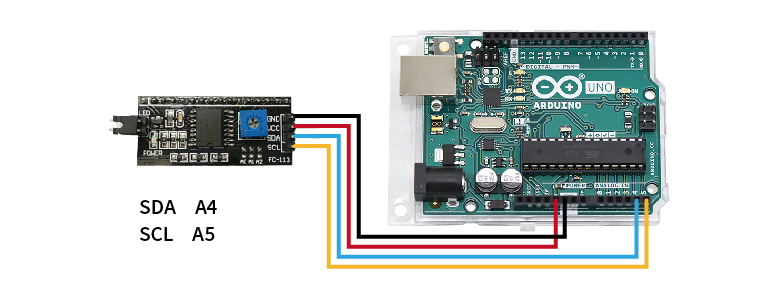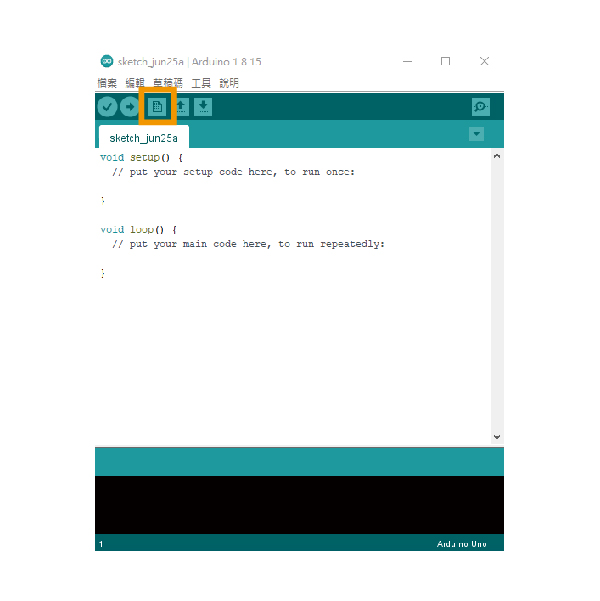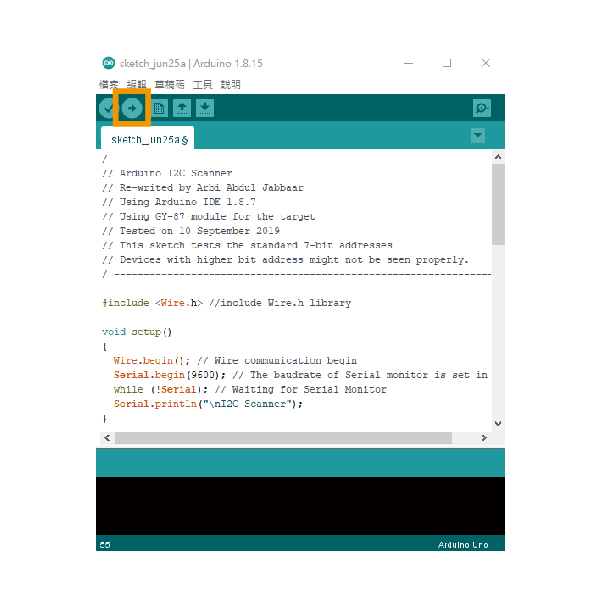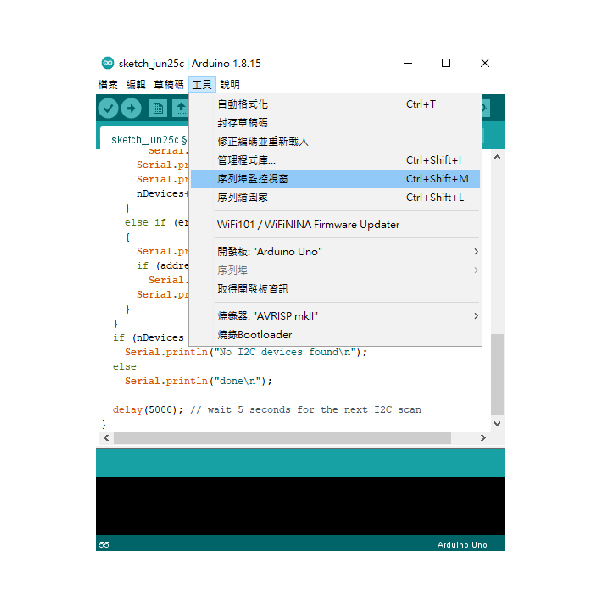商品描述
商品簡介
我們可以將溫度測量分為兩種:接觸式和非接觸式。 接觸測量僅在測試對象和傳感器達到熱平衡時才能準確測量溫度。 這可能意味著更長的響應時間和讀數誤差會被環境溫度所抵消。 相比之下,非接觸式測量使用紅外輻射來測量溫度,不需要直接觸。此外,這種測量方法可以快速,準確地讀取。
最新的紅外溫度測量模塊是MLX90614。 該模塊通過檢測紅外輻射能量和波長分佈來測量表面溫度。 紅外溫度探頭由光學系統,光電探測器,放大器,信號處理和輸出模塊組成。 光學系統在其視場中收集紅外輻射,並且當在光電檢測器上會聚時,紅外輻射能量會轉換為相應的電信號。 經過放大器和信號處理電路處理後,信號被轉換為溫度值。 MLX90614是自校準的,並且具有集成到信號處理芯片中的低噪聲放大器。 該芯片本身是一個17位ADC和DSP器件,可提供準確可靠的結果。
應用範圍:
常用於醫療,環境監測,家庭自動化,汽車電子,航空航天和軍事應用。
商品規格
工作電壓:3.3V-5V
工作電流:1.2mA
溫度範圍:-70.01℃至+270℃,
分辨率0.01℃
接口類型:IIC
接口線序:VCC,GND,SCL,SDA
視場:5°
尺寸:31.5mm×18mm
重量:15g
應用範例

文件下載
出貨清單
- Gravity: I2C 非接觸式紅外線溫度感測器 (MLX90614-DCI) x 1
如何查詢I2C位址
操作流程
STEP 1. 將欲查詢的模組連接至Arduino UNO(附圖為腳位參考,實際請比對商品標示接線)

STEP 2. 開啟Arduino IDE並新增檔案

STEP 3. 貼入教學下方的範例文件,並上傳到Arduino UNO,即會開始掃描I2C位址

STEP 4. 開啟序列埠監控視窗,即可取得I2C位址

I2C掃描範例程式
/ ---------------------------------------------------------------- /
// Arduino I2C Scanner
// Re-writed by Arbi Abdul Jabbaar
// Using Arduino IDE 1.8.7
// Using GY-87 module for the target
// Tested on 10 September 2019
// This sketch tests the standard 7-bit addresses
// Devices with higher bit address might not be seen properly.
/ ---------------------------------------------------------------- /
#include <Wire.h> // include Wire.h library
void setup()
{
Wire.begin(); // Wire communication begin
Serial.begin(9600); // The baudrate of Serial monitor is set in 9600
while (!Serial); // Waiting for Serial Monitor
Serial.println("\nI2C Scanner");
}
void loop()
{
byte error, address; // variable for error and I2C address
int nDevices;
Serial.println("Scanning...");
nDevices = 0;
for (address = 1; address < 127; address++ )
{
// The i2c_scanner uses the return value of
// the Wire.endTransmission to see if
// a device did acknowledge to the address.
Wire.beginTransmission(address);
error = Wire.endTransmission();
if (error == 0)
{
Serial.print("I2C device found at address 0x");
if (address < 16)
Serial.print("0");
Serial.print(address, HEX);
Serial.println(" !");
nDevices++;
}
else if (error == 4)
{
Serial.print("Unknown error at address 0x");
if (address < 16)
Serial.print("0");
Serial.println(address, HEX);
}
}
if (nDevices == 0)
Serial.println("No I2C devices found\n");
else
Serial.println("done\n");
delay(5000); // wait 5 seconds for the next I2C scan
}





